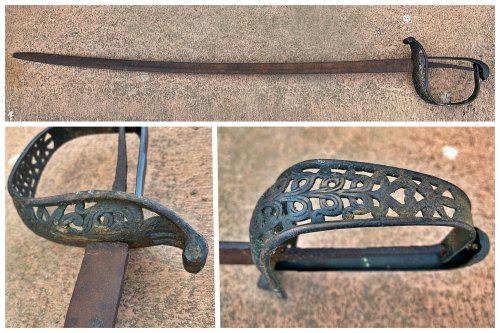
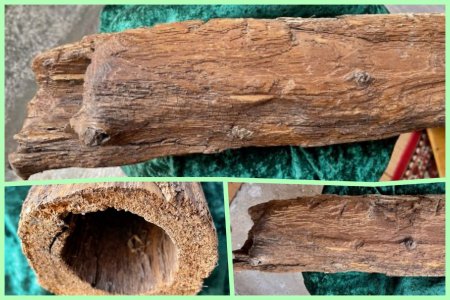
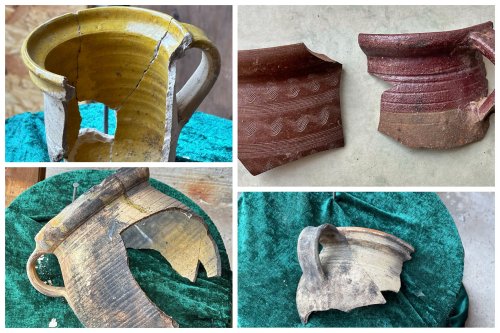
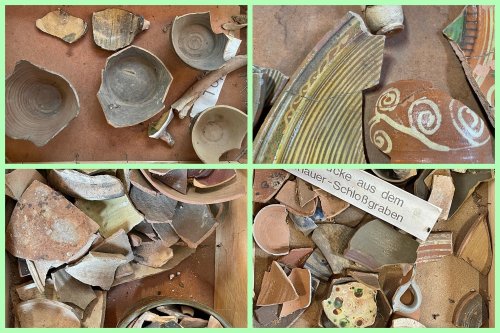
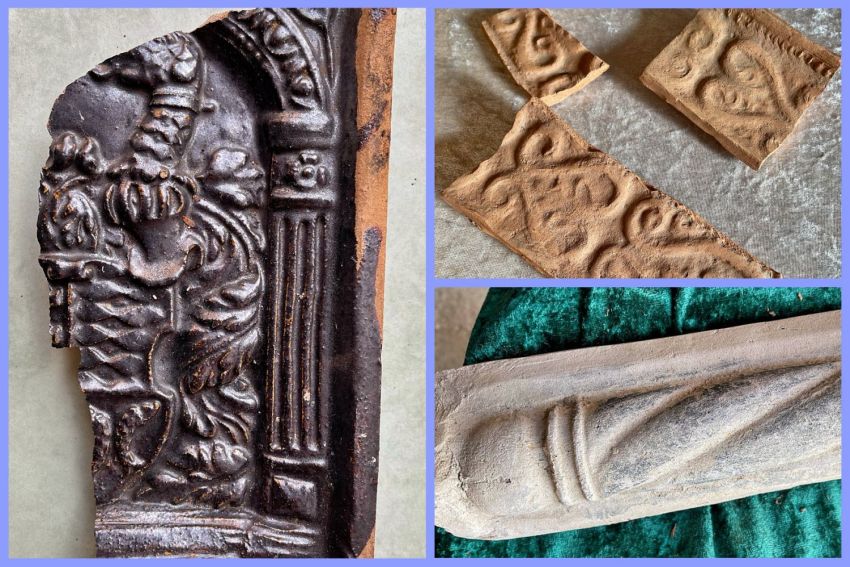
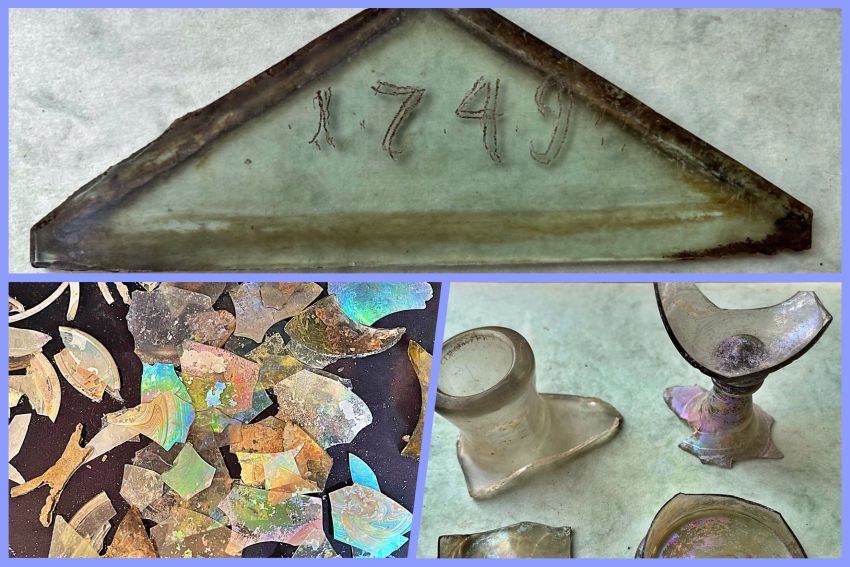
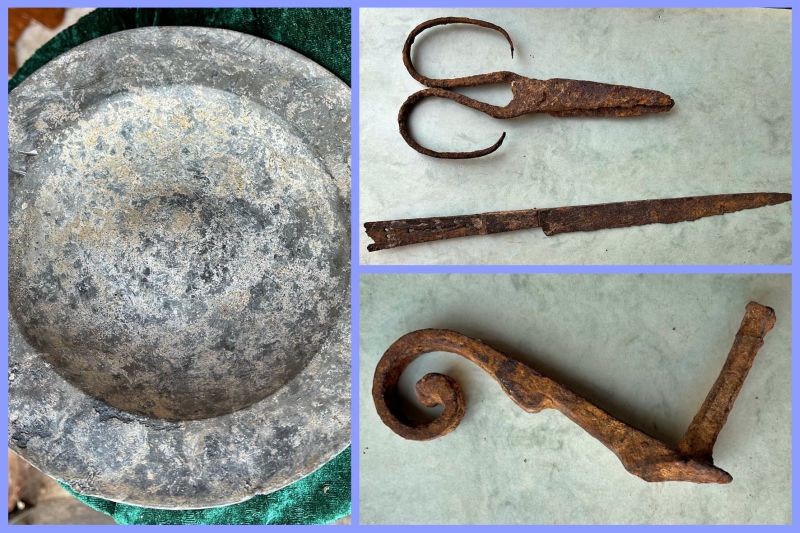
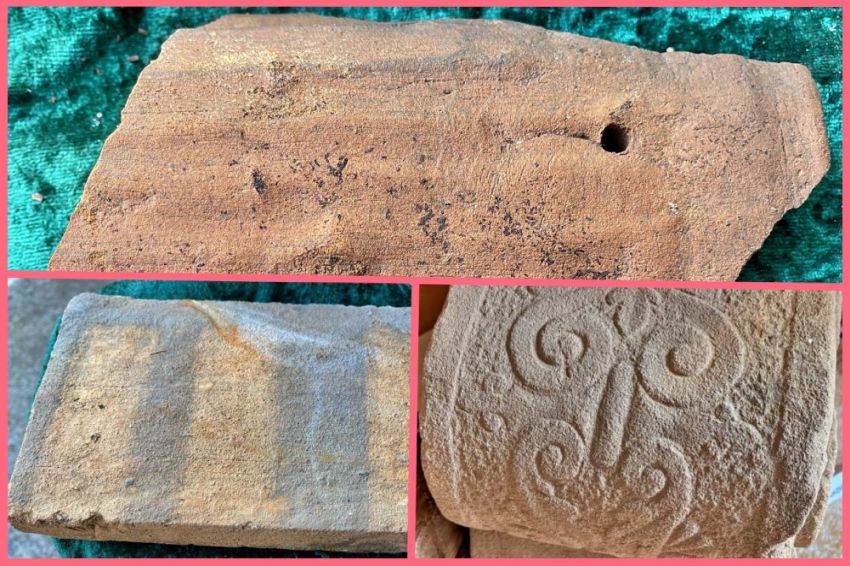

|
This sabre of a Prussian cavalryman was found half-buried in a field in Merlau. How did it get there? Well, it undoubtedly originally belonged to a Prussian, but how did he lose it? That's easy to understand when you know how it was used. A cavalryman could either slash with it as he charged past his opponent, or he could stab with it. When used as a thrusting weapon, there was a danger of losing the handle of the sabre if it was stuck firmly in the enemy. So it happened that our sabre was abandoned by the Prussians and we found it in a Merlau field. |

|
This wooden pipe was once part of the water supply for Merlau schloss. Simply hollowed out a length of tree trunk to carry water from a local spring to the schloss. |

|
Broken pots are a signpost to the past for archaeologists. Each age and place has its own styles, which to an expert eye can identify the time and culture that used them. They can also give clues to the wealth of the people who did or did not own them. Were they expensive? Were they imported from distant lands? Or were they simply homemade pottery, produced locally and cheaply. |

|
Many of these pottery items are nothing more than everyday utensils for the general household. There is nothing here that would have been used by the lords and ladies of the schloss, but there is plenty, but what would you expect after two hundred years of use. |

|
These are examples of the tiles of the various stoves from the schloss. As was to be expected, there was a big difference between those in the elegant chambers and those in the servants' quarters |
 |
The year 1749 was carefully carved into a small window pane, and the glass fragments at the bottom left are the remains of old wine glasses and bottles. These were very finely, and therefore expensively, made. The other remains are not as elegant, so probably not from the upper table. |

|
The battered metal plate was once more elegant and many fine dinners must have been eaten here. The scissors and the knife are just two examples of the many items that ended up in the waste pit. The object at the bottom left is a window catch, one of the more than 365 windows that the schloss had. |

|
The top image is an old roof tile, of which there must have been thousands. Below left is a kitchen floor tile and below right is a nicely decorated stone from somewhere on the outside of the schloss. It must have been in an exposed position as it has suffered from the weather. |
These are just a few examples of the many fragments found of the old Merlau schloss. They can only hint at what a rich and elegant home the schloss must have been for many, many people here in Merlau. We can only guess what their lives were like all those years ago, but every little fragment we find helps to add to their story.
You will find all these fragments of the past on display in the Hobstallstowwe Museum. We hope that as time goes on and we are no longer hampered by the current pandemic, you will visit us there.